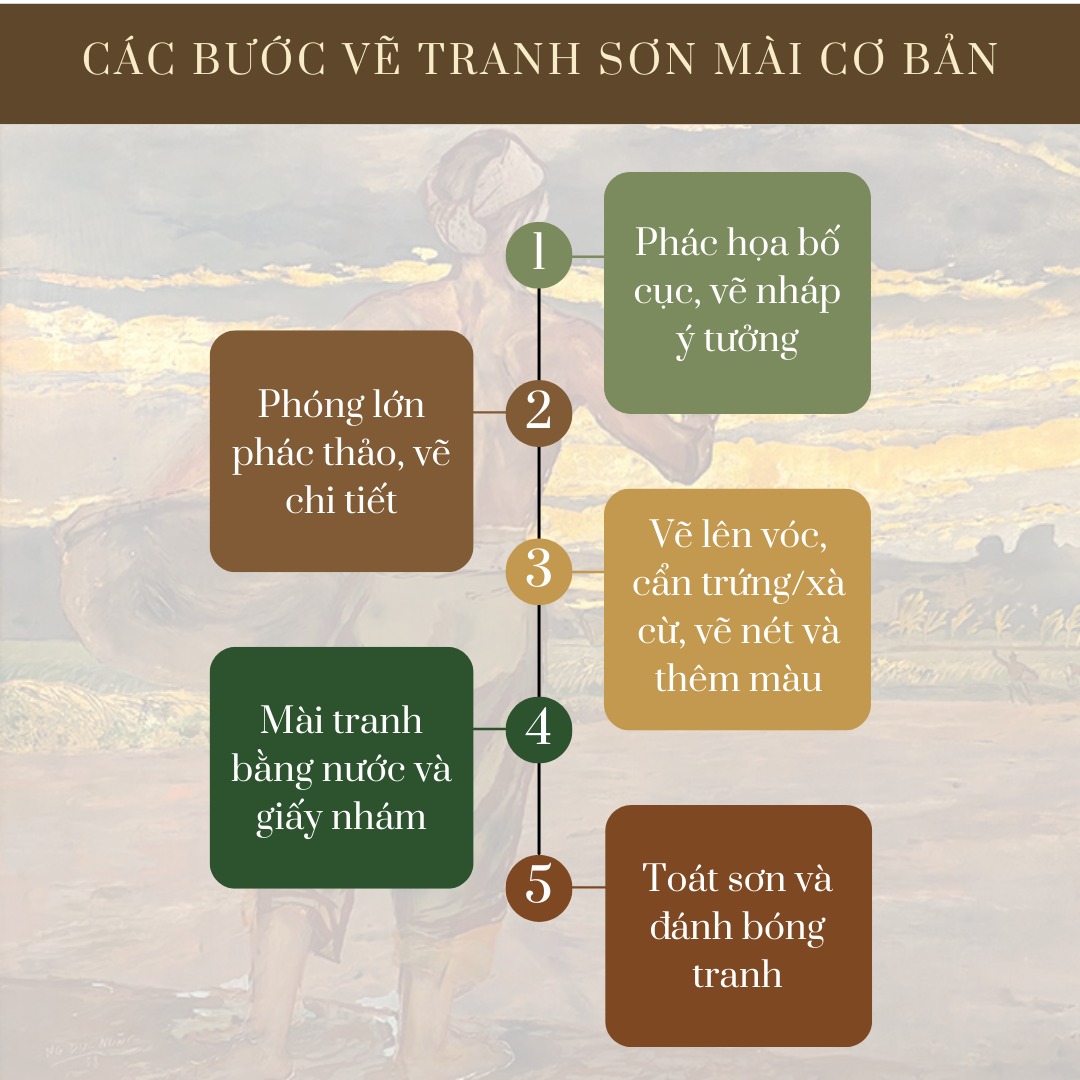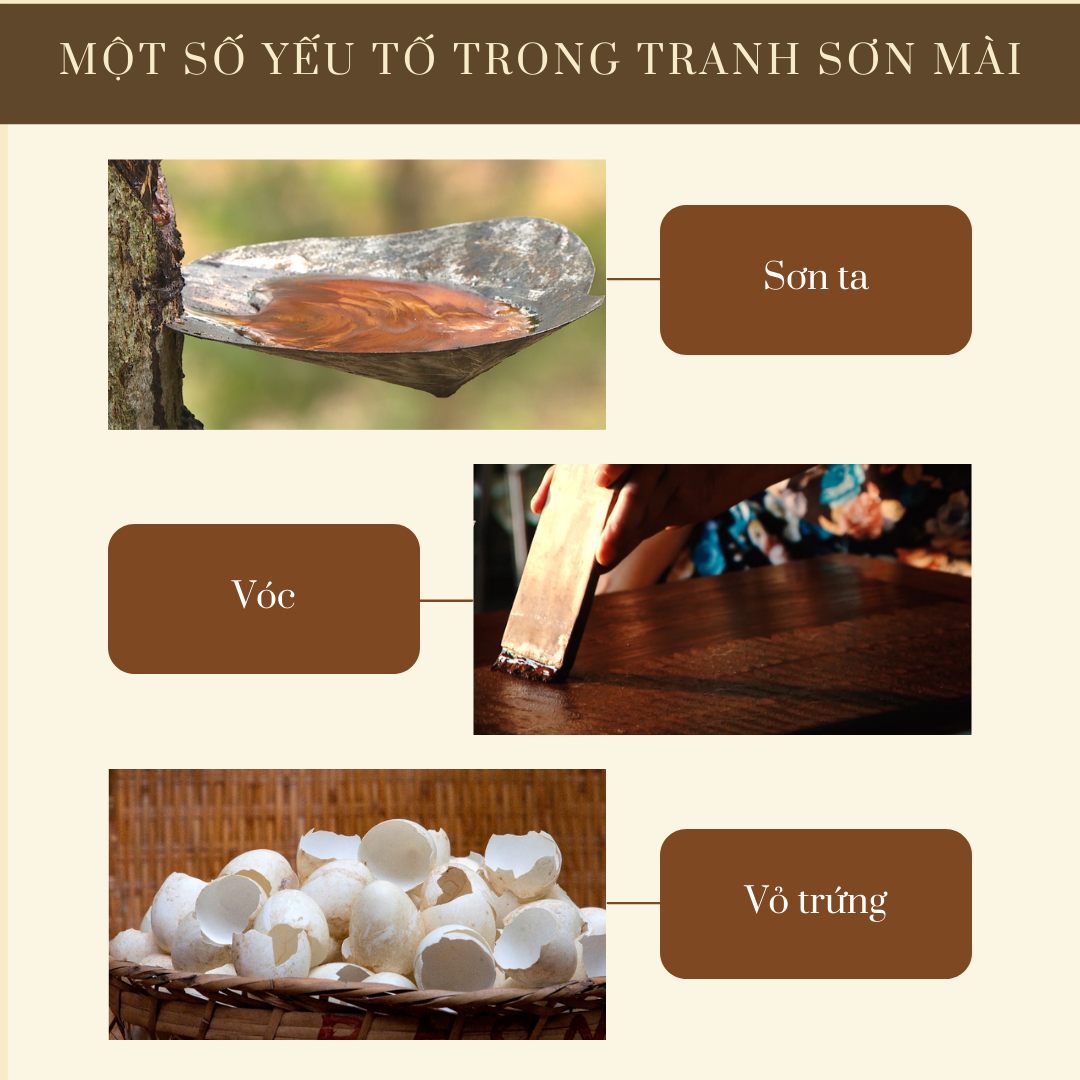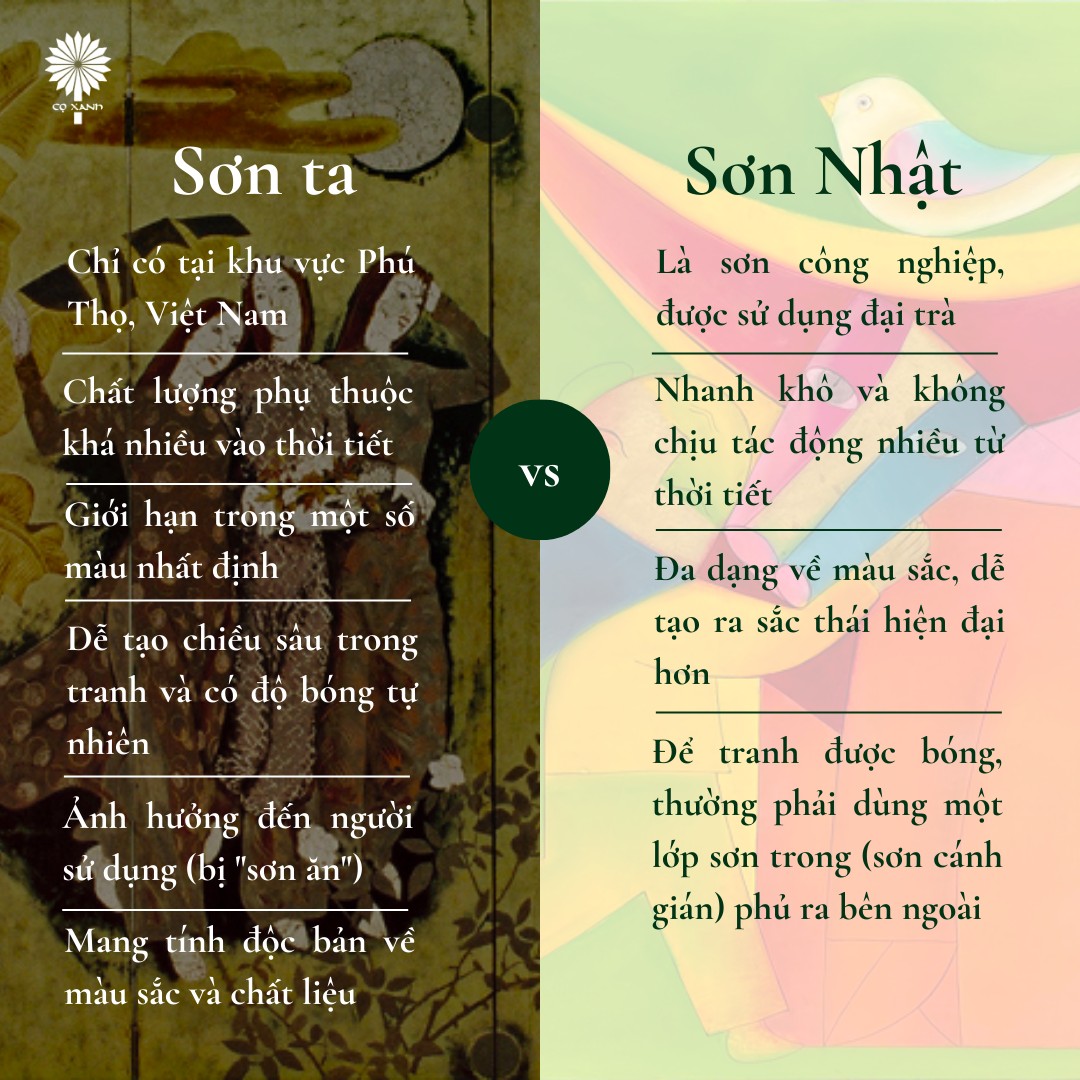History of Vietnam Lacquer Industry
I. What is lacquer?
Of the 8 national treasure paintings of Vietnam, 6 are made on lacquer material. So, what is lacquer?
The name Lacquer encapsulates the two main steps to create this painting material: Painting and Grinding. Developing from the profession of painting, artisans have turned a technique thought to be only for making handicrafts into an extremely unique school of art. Being a difficult and random material, the artist only knows the face of his work after the final grinding.



II. Distinguish between lacquers
Lacquer painting has always been the pride of traditional Vietnamese art. Under the talented hands of artisans, the raw materials given by nature are transformed into colorful works.
Son ta is the soul of lacquer painting throughout the twentieth century, as a famous artist To Ngoc Van shared: “The noun lacquer (laque) is a new noun coined later to refer to a technique formerly called lacquer painting. Son Ta has completely transformed due to the art of polishing paint. Son Ta technique is similar to Chinese painting, dating back to the Han Dynasty.[…]
However, from 1931 onwards, thanks to the earnest research of a number of talented artists who abandoned oil painting to switch completely to lacquer, Son Ta was able to go beyond the confinement, boldly on the vast path of painting. , keep moving forward in strange directions. From the casket, the clog, it surpasses the precious framed painting, from a dependent means of painting objects, it becomes a unique means, a means that surpasses oil painting. Forgetting the past, I changed my name to Son Mai.”
However, along with its historical development, Vietnam has had access to many new artistic styles and materials. Lacquer is no exception to the integration process when Japanese paint becomes a familiar tool in lacquer painting. Many people think that Japanese paint now somewhat “overtakes” our paint. Regardless of the material, the artist always wishes to convey his perspective to the viewer. Therefore, we need to find a balance between preserving the cultural beauty of our country as well as receiving modernity from Japanese paint.
1. Japanese lacquer
Japanese lacquer is also a traditional material, but currently, artists use this material, which is understood as Japanese industrial paint. Japanese paint dries quickly and has properties suitable for countries with low humidity like ours. The limitation of natural paint is that it can easily cause side effects to the user (being “eaten by paint”). In addition, when using natural paint, the painting depends a lot on the weather. When the weather has high humidity, the paint dries faster. If the weather is dry (low humidity), the paint takes a long time to dry, so many current artists love Japanese lacquer.
But when using Japanese paint, to make the painting glossy, the artist often uses a layer of clear paint (cockroach wing paint) to cover the outside of the painting, but if the lacquer painting uses Japanese paint, just take a handful of messy hair and rub it on the painting, Or use damp hands (with a little sweat) to rub the painting, it will be very shiny.
Although it does not have the same depth over time as our paintings, Japanese lacquer has a variety of colors to create cheerful shades and a much more modern array of colors. Therefore, depending on the style and brushstrokes as well as the use of colors, each artist chooses his own materials.
2. Traditional lacquer
Although traditional lacquer does not have many special colors like Japanese lacquer, it requires a lot of meticulousness and materials to make, such as gold plating, silver plating, eggshells, oyster shells, and inorganic minerals. (for example, lipstick)… In particular, lacquer works using traditional materials will have certain depths over time, which can be loosely called “time color”. Furthermore, it is unique and cannot be repeated.

Painting in Vietnam in particular and the world in general always revolves around countless materials, but lacquer always has a place. It is constantly evolving, changing and bearing the mark of the craftsman/artist who made this line of paintings. The traditional beauty of lacquer painting art is eternal and unchangeable in the art world.
III. Some typical lacquer painters
GREEN PALM GALLERY – Phòng tranh Cọ Xanh
Headquarters: 39 Hang Gai, Hanoi, Vietnam
Hotline: + 84 24 3828 8298 – +84 97762 7722
Email: info@greenpalmgallery.com
Branch: 49 Mac Thi Buoi, Ben Nghe Ward, District 1, Ho Chi Minh City, Vietnam
Hotline: +84 28 6650 7477 – +84 98874 1116
Email: info_hcm@greenpalmgallery.com
Website: http://greenpalmgallery.com/
Fanpage: https://www.facebook.com/GreenPalmGallery


